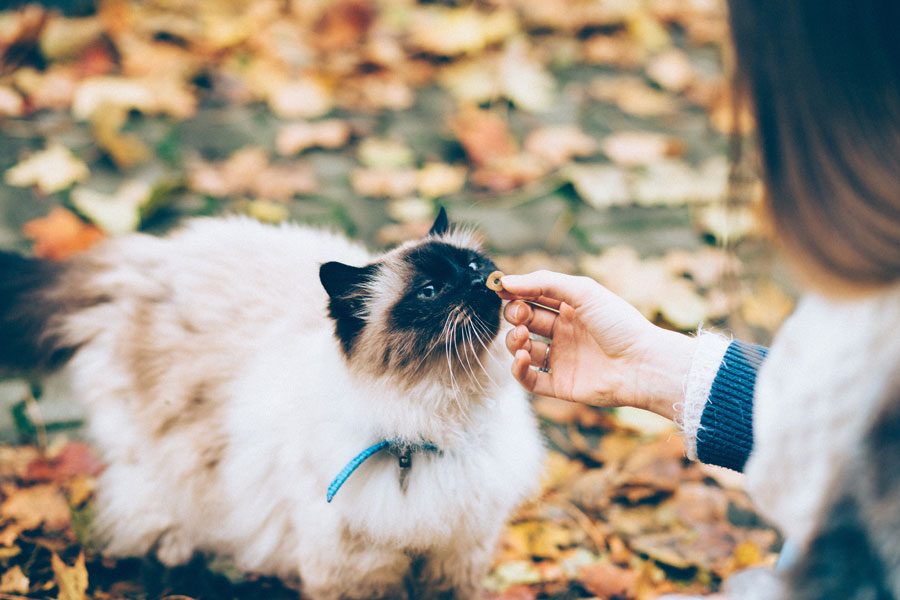Cats are mischievous animals (also adorable though!), so it’s not surprising they can land themselves in trouble from time to time. As pet parents, it pays to be aware of the most common cat injuries and know what to do should they occur.
Indeed, curious cats can suffer from a whole host of injuries from broken nails and fractured teeth to kidney disease and fractures. However, here are 4 common ailments and how to address them.
Image source: freestocks.org on Unsplash
4 common cat injuries and how to treat them
Cats have nine lives, or so the saying goes. However, this doesn’t mean we shouldn’t take cat injuries seriously. What’s more, it’s believed that cats are less likely to show their pain and suffering (compared to dogs), which means injuries can be more difficult to identify.
Here are 4 common wounds and occurrences to be aware of and to educate pet owners on.
1. Help, my cat has swallowed something it shouldn’t have!
When a cat swallows a foreign object it can be a cause for concern. According to the Pet Health Network, signs that a cat has swallowed something it shouldn’t have include:
- Vomiting
- Diarrhoea
- Abdominal pain
- Lost appetite
- Constipation
- Lethargy
- Showing signs of aggression when picked up (hissing or biting)
Of course, understanding or identify what it is they swallowed is a helpful first step.
While it usually takes approximately 10-24 hours for something to pass through a cat’s digestive system, certain items and objects can take longer. Indeed, if the object is large it may cause an obstruction in the digestive tract.
Unfortunately, it’s not uncommon for cats to swallow string or thread and this can be quite severe. Linear foreign objects can wrap around the tongue or intestines. In this instance, intravenous fluid, pain control and potentially surgery may be required. Therefore, if you suspect that your cat has swallowed a piece of string or any other linear foreign object, a trip to the local vet is the best course of action.
Image source: Juan Gomez on Unsplash
2. Eek, my cat has an insect sting or bite
Insect stings and bites are common cat injuries. According to Animal Friends, wasps, bees, mosquitoes, ticks and spiders are the most common culprits.
So what should you do if your beloved cat gets stung or bitten by a nasty insect?
In the case of a bee sting, firstly remove the stinger with a pair of tweezers or credit card. To help reduce the swelling and redness, apply a cold compress or a cool, damp cloth.
To reduce the pain and irritation, you can apply a small amount of hydrocortisone cream to help soothe the area and prevent your kitty from scratching or biting the site.
Image source: Miron Cristina on Unsplash
3. My cat has been poisoned
There are numerous ways for a cat to ingest something poisonous. They may directly swallow a toxic substance, ingest poison while grooming their fur or even inhale something toxic.
Generally, your cat’s body language and behaviour will be enough to indicate it’s been poisoned. For example, they may suffer from vomiting, diarrhoea, seizures, tremors, lethargy, difficulty breathing or inflammation of the skin.
If you suspect a cat in your care has been poisoned, first try to identify the source of the poison. Remove the cat from the poisonous area or source.
If the toxic substance is on the cat’s fur or paws, don’t allow the cat to groom itself. Wash the cat’s fur and paws with mild soap or shampoo and lukewarm water. If necessary, you can cut off hair that has been contaminated.
In cases where the cat has ingested a poisonous substance, the best action is to take the cat to the vet. For more information on cats and poisons, check out this article from International Cat Care.
Image source: Dan Wayman on Unsplash
4. Oh heck, I think my cat has heat stroke
While overweight felines and kittens are most at risk of heat stroke, all cats can suffer in hot weather. Likewise, certain breeds of cat are more at risk of heat stroke. This includes Persian, Himalayan, British Short-hair and snub-nose cats.
Some signs of heat stroke in cats include:
- Panting
- Sweaty footpads
- Disorientation
- Vomiting
- Drooling
If you fear your cat has heat stroke there are a number of measures you can take.
If you have a thermometer, take the cat’s temperature. A reading of 40 degrees Celsius or higher is an indication of heat stroke. If you don’t have a thermometer, you will need to be guided by the cat’s behaviour and symptoms.
The next step is to attempt to gradually lower their body temperature. Firstly, move the cat into a cool and quiet area and place a cool, damp towel underneath their body.
Provide them with small amounts of water frequently but don’t force them to drink.
You can use a fan or air conditioning to help slowly bring their temperature into the normal range.
Keep monitoring the cat’s behaviour and, if you have a thermometer, take its temperature approximately every 10 minutes. Once its temperature reduces you can stop the cooling process.
Be mindful that even if you successfully lower the cat’s temperature it’s safest to take the cat to the vet for a check-up.
Indeed, when it comes to any cat injuries – a trip to the vet will provide peace of mind and help support a speedy recovery.
Has your cat ever suffered an injury? What action did you take?











I think my cats nose may be broken, I guess he got into a fight..??
But, he is sneezing, and struggling to breathe they his nose, especially trying to eat!
I hope you have been able to take your cat to the vet to check this out.